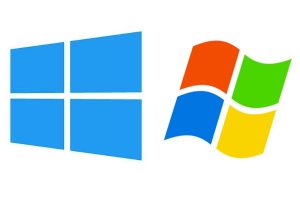Microsoft’s current operating system offerings represent more choices than most consumers know what to do with. Windows 7 still leads the pack; according to July 2014 numbers from Net Market Share, its market share increased to 51.22% of computers worldwide. Windows 8 and 8.1, meanwhile — the former introduced a new tablet and hybrid device-friendly look, while the latter integrated those with a more classic desktop experience — are holding steady around 12.48%.
Then there’s Windows XP, which still claims a shocking 24.82% of the market, even though support for the OS ended in April and repeated security issues have plagued XP users since. Many in the tech world are already buzzing about the possibility of Windows 9, too, which should be available sometime in early 2015.
If you’re a business owner or key employee looking to update existing systems or purchase new ones, you might be confused by all the choices. Which is why we’ve identified the top 4 attributes and 1 main drawback of Windows 7, Windows 8, and Windows 8.1. Armed with this kind of information, and with a trusted IT advisor by your side, you can make the best decision for your company.
Top 4 Attributes of Windows 7
1) Stability. If you’re moving up from Windows XP or Vista and were plagued by those two operating systems’ constant security issues, Windows 7, which came out 5 years ago, is probably right for you.
2) A familiar user experience. Windows 8 brought touch technology to the desktop world, basically jamming two competing user interfaces into one OS. If you value simplicity and familiarity, Windows 7 will soothe your nerves — while Windows 8 will probably drive you crazy.
3) Time-tested security updates. Windows 7 has been through one major Service Pack upgrade and countless bug fixes over the years, resulting in a rock-solid OS with very few of its predecessors’ (or successors’) problems. 51% of market share is nothing to sneeze at.
4) A redesigned task bar that allows applications to be pinned to it. If you’re coming from Windows XP or Vista, this small tweak will seem like a major upgrade, as it allows for greater productivity and efficiency.
Major Drawback: If you already have Windows 7, it’s fine for the time being. But the Home version of Windows 7 will no longer be for sale after October 2014, while Professional versions will remain on the market until August 2015. Meanwhile, mainstream support for it will end in January 2015, with extended support lasting through 2020. Another repeat of the protracted Windows XP end-of-life scenario is possible — not to mention compatibility problems that will pop up as new software is written to the standards of newer operating systems.
Top 4 Attributes of Windows 8
1) Improved boot time and overall performance. Windows 8 machines typically take only 10-15 seconds to boot up, and the OS combines hibernation and shutdown modes into one hybrid mode that allows for quick start-up, too.
2) OS-level support for USB 3 devices. This new feature allows for transfer speeds of up to 5 GB/second, which can drastically enhance efficiency and productivity.
3) A visually appealing and informative Task Manager. Windows 8 displays statistics on heat, CPU, memory, disk, Ethernet, wireless consumption, and boot time using easy-to-read graphs and charts.
4) It’s geared toward tablets, mobile devices, and other hybrids. Microsoft’s massive redesign of the User Interface introduces a Metro shell that geared directly toward touch devices. It’s the future, but…
Major Drawback: If you’re not ready for the massive shift toward touch-friendly technology, Microsoft 8 will probably leave you in the dark.
Top 4 Attributes of Windows 8.1
1) It blends the best of Windows 8’s touch-specific UI with a more classic desktop experience. Bringing back the Start button and boot-to-desktop capabilities appeased those angry of Windows 8’s move away from desktop interface while still maintaining Windows 8’s modern look and feel.
2) Extensive app compatibility. Windows 8.1’s more flexible Snap function is a major improvement on Windows 8’s two-apps-at-a-time limitation. And the integration between Office 2013, Office 365, and One Drive is seamless since all of those products were designed together.
3) Streamlined search. Windows 8’s Search queue still separated results into Apps, Files, and Settings categories, but 8.1’s Smart Search blends all results — including those from SkyDrive, the Web, and video and music files — together into one cohesive whole.
4) Security. Windows 8.1 is the first Microsoft OS to enable BitLocker Drive encryption by default. Windows 7 requires a manual download of Microsoft Security Essentials, while Windows 8 requires that users turn on BitLocker. 8.1 also includes secure booting and automatic connection to VPNs, minimizing the risk of malware infecting your system.
Major Drawback: 8.1 brought back the Start button, but not the Start menu, which early reports indicate will be a major feature of Windows 9. And although some people consider it a sticking point, 8.1 contains two modes: an app mode good for mobile users and a desktop mode similar to the classic Windows 7 experience.
Strategically speaking, Windows 8.1 is the best answer for anyone looking to purchase new computers. If you’re still not sure about the right operating system for you and your business, contact CMIT Solutions today. We’re here to make technology work for you, not against you.


Leave a comment!
You must be logged in to post a comment.